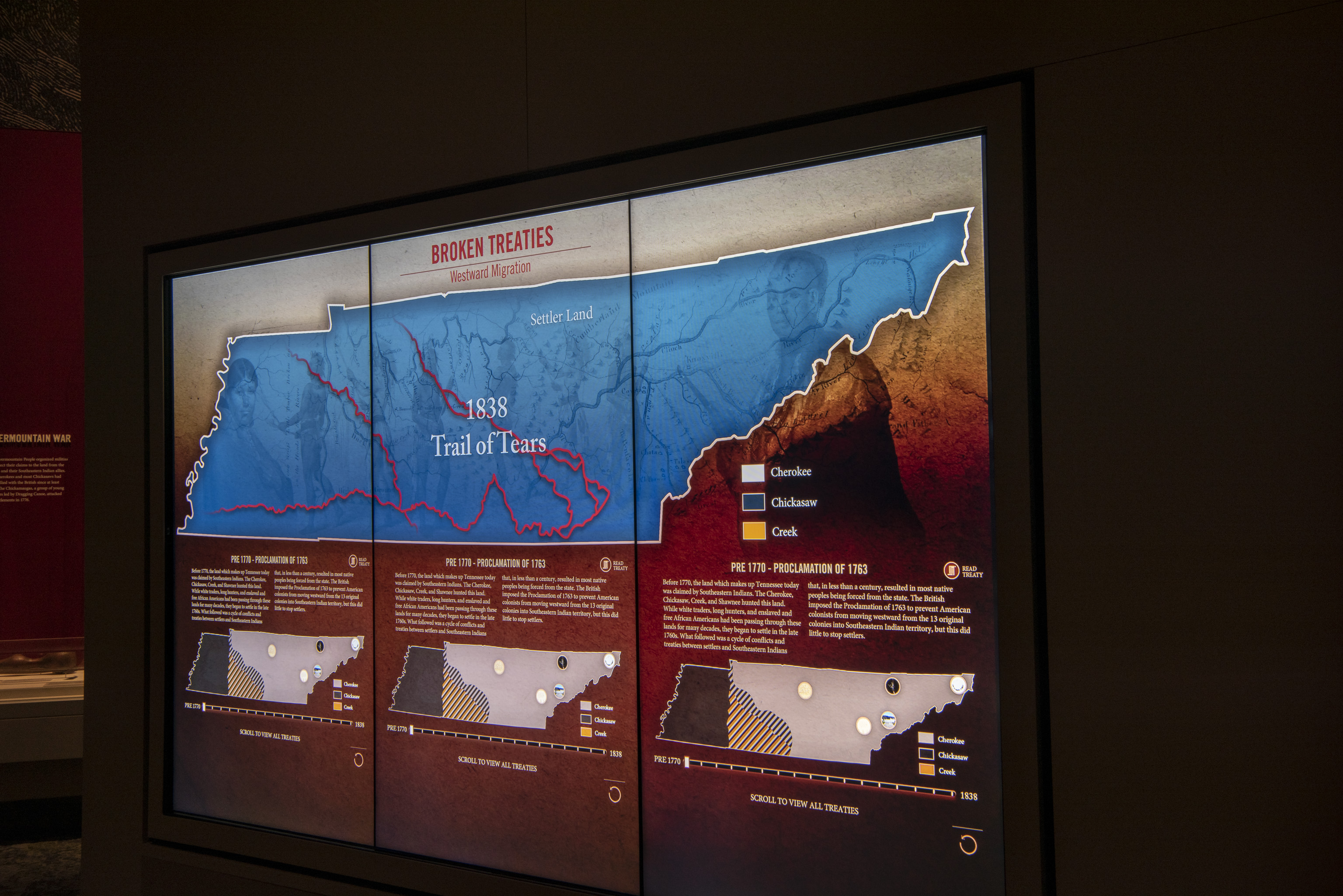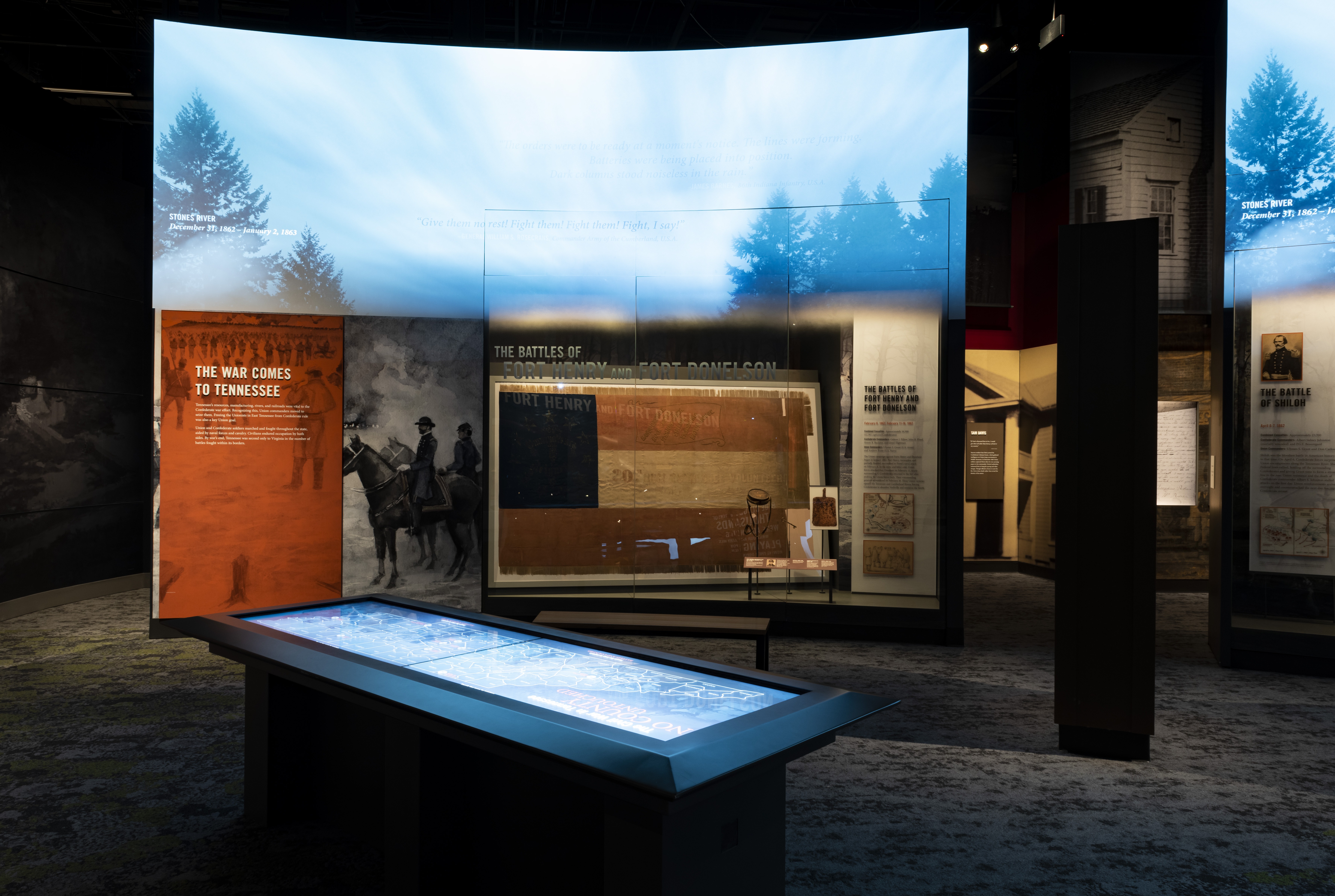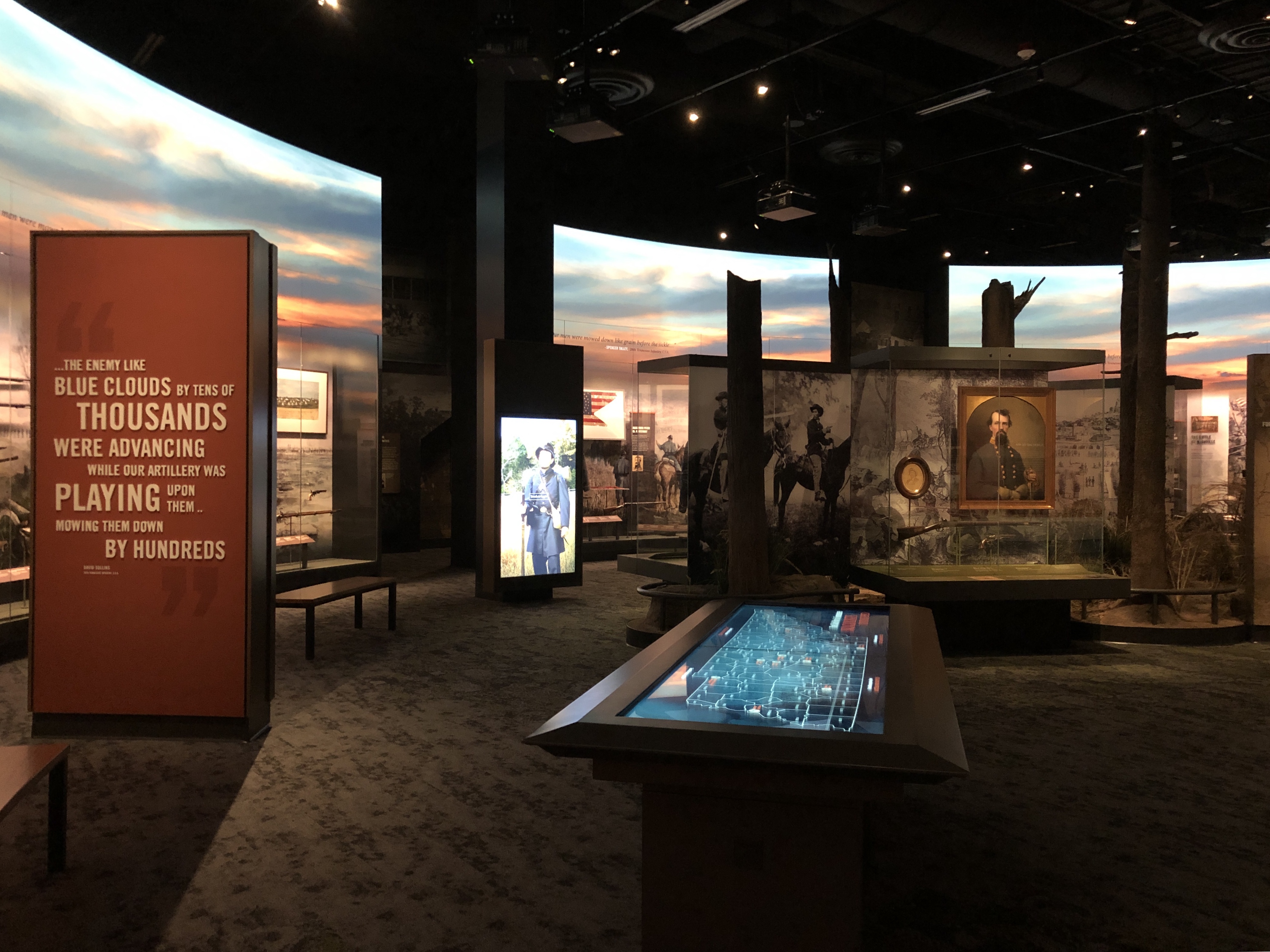August 27, 2021
5 min read
The Tennessee State Museum, which opened in October 2018 on the corner of Rosa L. Parks Boulevard and Jefferson Street in Nashville, has already become a must-see attraction. Tracing its roots back to a museum opened by a portrait artist on the Nashville public square in 1817 and later to a state museum that consolidated World War I mementoes and other collections from the state, the Tennessee Historical Society and other groups, the current iteration of the Tennessee State Museum charges no admission fee and has become an important catalyst for the educational and cultural enrichment of Tennesseans and tourists alike.
Its mission is to procure, preserve, exhibit, and interpret objects that relate to the social, political, economic, and cultural history of Tennessee and Tennesseans. One of the largest museums in Nashville, it spans 137,000 square feet and has hosted hundreds of thousands of visitors since it opened.
A key component of the Tennessee State Museum is a flexible and feature-rich AV system that brings to life the history and stories it shares throughout its seven permanent exhibits and a rotating roster of temporary and seasonal exhibits. The museum additionally features a 200-seat Digital Learning and Outreach Center, and several common areas that host events, lectures, panel discussions, and film screenings.
“Particularly exciting is the way we tell these stories through sophisticated AV presentations,” said Ashley Howell, executive director of the Tennessee State Museum. “Each visitor learns differently – through seeing, hearing, and touching – and our audio-video presentations bring all of their senses into play as they explore artifacts and images, view documentaries and films, or interact with touchscreen displays.”

The museum won an Excellence in Development Award from the Nashville Chapter of the Urban Land Institute in September 2020 for its “design and construction, catalytic effect, standard of industry excellence, and environmental stewardship.” (YouTube link.) In addition to the museum’s executive team, the award recognized the efforts of the larger group responsible for the success, including Design & Production Inc. (D&P), a design, project management, and technology system integration firm for the museum market that was responsible for system fabrication; and Gallagher & Associates, a museum planning and design company that created all of the interpretive exhibits, graphics, and donor recognition efforts, and concepted all of the audio-visual experiences. Exhibit software at the Tennessee State Museum was developed by Cortina Productions, a creative media design and production company specializing in the museum field; and Northern Light Productions, creators of transformative experiences for brands, museums and public venues.
Sue Lepp, senior vice president at D&P, is gratified by visitors’ enthusiasm and critical acclaim the institution has received. She sees the facility as the blueprint for the modern museum.
“The vision of the Tennessee State Museum’s administration and the layout of the facility, combined with the important history-telling mission, made this a particularly rewarding project to work on,” said Lepp. “A museum experience should be entertaining as well as educational in order to draw repeat visitors and keep the interest of today’s tech-savvy audiences.”
Greg Matty, project executive at Gallagher & Associates, pointed out that this ambitious project was executed under a tight deadline, which made efficient teamwork essential.
“The timeframe for this project – to outfit a huge new building with state-of-the-art AV-driven exhibits – was only three years from start to finish, which was quite ambitious,” said Matty. “All parties pulled together to contribute value and deliver the world-class exhibits for visitors to enjoy and learn from for years to come.”

Civil War and Reconstruction exhibit watch a five-minute video that sets the tone of the times before being plunged into an immersive experience that includes projected text and imagery, as well as transporting soundscapes. (Image credit: Tennessee State Museum)
Next-Gen Exhibits Require High-Performing and Cost-Effective AV
Examples of the museum’s many interactive and visually engaging installations include the Tennessee Time Tunnel exhibit, which serves as the backbone for the entire permanent gallery. Its aim is to provide visitors a multi-layered experience with engaging media and thought-provoking interactive displays.
As visitors enter the Civil War and Reconstruction exhibit, they watch a five-minute video that sets the tone of the times before being plunged into an immersive experience that includes projected text and imagery, as well as transporting soundscapes. An interactive touch table with a map of Tennessee lets visitors access information and stories from the battlefield and beyond from each of the state’s 95 counties.
In the Tennessee Transforms exhibit, another interactive map enables visitors to learn about influences that have formed and continue to form the state’s cultural identity and people’s impression of the state. A theater within the museum hosts an interactive touch table and three large wall screens on which visitors can explore more than 100 cultural topics. The Digital Learning and Outreach Center provides presentation space and remote access to other museums, colleges, schools, and scholars.
To provide the necessary level of technical performance for these exhibits, the museum’s technical team chose a ZeeVee and Juniper Networks-driven Software Defined Video over Ethernet (SDVoE) AVoIP solution to distribute the wide array of AV content throughout the facility. For starters, the SDVoE AVoIP network is able to deliver high image quality with near-zero latency, which was essential for the interactive exhibits. The technology also gives the museum the flexibility to quickly scale to deliver content to additional endpoints as permanent and temporary exhibits call for more sources or displays to be connected.
Ambient sound is served to theaters and specialized exhibit subsystems via QSC’s Q-SYS Core 510 processor. Panasonic projectors and displays, 3M touchscreens, Dell computers, and BrightSign video players have been standardized across the various subsystems. A fiber backbone was implemented to distribute AV signals throughout the facility.

Ancillary equipment for custom touch tables included PQ Labs touch frames with Panasonic Videowall displays for interactivity. All source and signal distribution equipment is located in Middle Atlantic equipment racks.
ZeeVee encoders and decoders extend signals to more than 20 individual exhibit locations, many with multiple synced sources and displays. The entire system is networked via Juniper Networks EX4550 Ethernet switches. The user interface and unifying control system was custom programmed by D&P using Medialon Manager by 7thSense.
Of great importance to any public venue is the reliability and ease of maintenance in support of the visitor programs. The networked and digital character of the selected equipment provides a reliable and maintainable system that is able to operate year round on an automated schedule, with options to support special events after hours. Component failures can’t always be prevented, but the ability to troubleshoot remotely via the Medialon control system and network access to the Juniper, ZeeVee, and Q-SYS signal distribution systems lessens the burden on the educators and museum staff.
The Tennessee State Museum’s administrators, staff, and sponsors have all been impressed by the widespread positive attention the institution has generated and credit the role technology has played.
“We wanted to elevate the exhibits from passive to active experiences that highlight the eras, individuals, and artists who have contributed to the development of Tennessee’s identity within the state, and its role on the national and international stage,” said Howell. “Our partners on this project brought great enthusiasm along with impressive skill sets to create a dynamic AV system that enabled us to meet our goal.”
This article was written by Scn Staff from AV Network and was legally licensed through the Industry Dive publisher network. Please direct all licensing questions to legal@industrydive.com.
